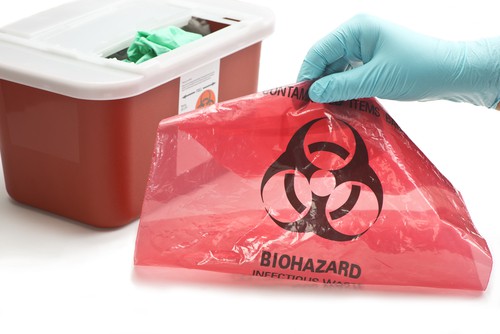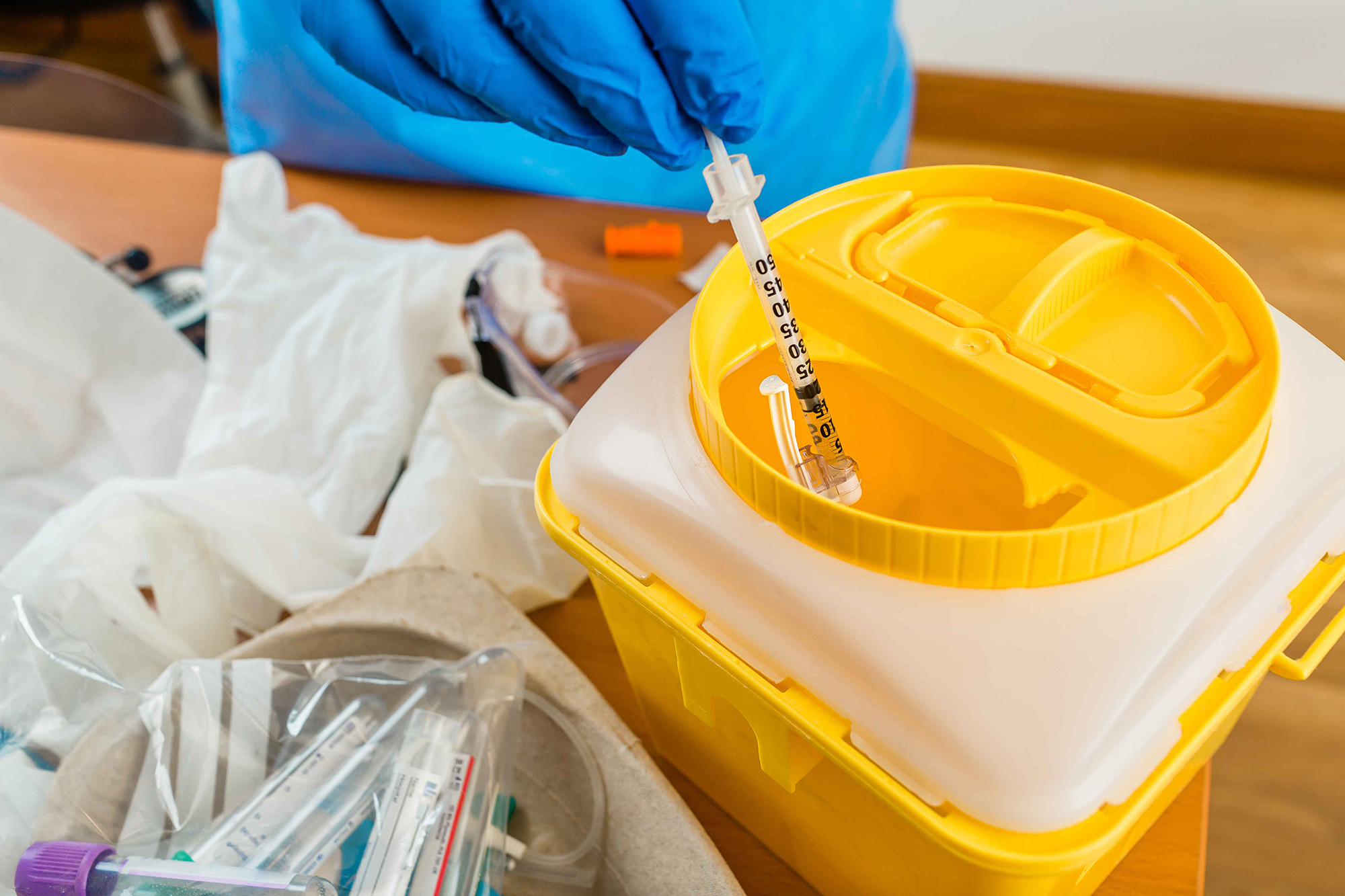Ideal Practices for Medical Waste Monitoring
Clinical waste monitoring is a vital facet of health care centers' procedures to make certain the safety and security of individuals, staff, and the atmosphere. Applying finest practices in clinical waste monitoring is important to minimize the risks associated with contaminated materials. This consists of appropriate segregation and classification of waste, guaranteeing its secure storage space and labeling, adhering to regulative standards, and using effective disposal methods. By adhering to these best methods, healthcare facilities can reduce the possibility for infections, injuries, and contamination triggered by incorrect handling and disposal of medical waste. This introduction aims to give an overview of the value of best practices for medical waste monitoring and the succeeding sections will certainly explore each practice thoroughly.
Segregation and Categorization
In the field of medical waste monitoring, appropriate segregation and categorization are necessary techniques for making sure the effective and risk-free disposal of healthcare-related products. Medical waste is created from different sources, consisting of medical facilities, facilities, labs, and other medical care centers. It consists of a large range of items, such as needles, syringes, plasters, gloves, and pharmaceutical waste.
Segregation involves the systematic splitting up of different types of clinical waste based on their characteristics and potential dangers. This process helps to avoid cross-contamination and makes certain that each kind of waste is handled appropriately. Sharps waste, such as needles and blades, ought to be positioned in puncture-resistant containers to stop injuries and the spread of infectious diseases. Infectious waste, such as blood-soaked plasters or societies, need to be segregated and dealt with separately to decrease the risk of spreading virus.
Categorization is the process of categorizing medical waste right into different categories based on its potential threats. WasteX Medical Waste Disposal. These categories may include infectious waste, dangerous waste, pharmaceutical waste, and general waste. By classifying waste, health care facilities can identify the suitable disposal methods and make sure conformity with regional guidelines and standards
Appropriate partition and classification of clinical waste not just safeguard the health and wellness of healthcare employees and the general public yet likewise add to the total effectiveness and performance of waste administration. It lowers the danger of mishaps, lessens ecological influences, and advertises liable waste disposal methods.
Appropriate Storage and Labeling
To guarantee the secure and efficient disposal of medical waste, health care centers need to stick to proper storage and labeling techniques. Appropriate storage and labeling play an essential role in maintaining the integrity of clinical waste monitoring systems and securing the health and wellness of health care workers, people, and the public.
When it comes to storage space, it is important to have assigned locations particularly designed for various sorts of clinical waste. These locations ought to be secure, well-ventilated, and equipped with suitable containers that fulfill regulatory requirements. Segregation and categorization of waste must also be considered to prevent cross-contamination and potential risks.
Furthermore, proper labeling is essential for reliable waste management - medical waste removal. Each container must be plainly identified with the ideal icons, color-coding, and details regarding the waste it includes.
Normal monitoring and examination of storage space areas and containers are necessary to determine any kind of problems or offenses. Personnel should be trained on correct storage space and labeling methods, emphasizing the relevance of compliance with guidelines and procedures.
Safe Transportation and Handling
Guaranteeing the correct and safe transportation and handling of medical waste is crucial for keeping the honesty of waste management systems and securing the health and wellness of all entailed. Clinical waste, which consists of items infected with transmittable materials, drugs, and various other hazardous substances, must be transferred in a fashion that stops leaks, spills, and possible contamination.
It is crucial to make use of puncture-resistant and watertight containers that are especially made for medical waste. In addition, waste must be segregated based on its nature and type to prevent cross-contamination.
Throughout transport, it is necessary to make sure that waste containers are safely secured and kept in a stable way. Vehicles used for moving clinical waste should be furnished with suitable safety and security attributes, such as spill control systems, to decrease the danger of any kind of spills or leakages (medical waste removal service). Chauffeurs should obtain training on appropriate handling and emergency reaction treatments to successfully attend to any unanticipated cases
Furthermore, the transportation and handling of clinical waste need to adhere to all appropriate policies and standards set forth by local, state, and government authorities. Routine examinations and audits need to be carried out to assess compliance and determine any kind of areas for improvement.

Compliance With Regulatory Standards
Preserving compliance with regulative standards is essential for reliable clinical waste administration. These guidelines are established to shield public wellness and the setting by ensuring that clinical waste is appropriately taken care of, treated, and disposed of. medical waste removal service. Conformity with regulatory standards assists to protect against the spread of transmittable diseases, reduce possible risks, and lower the overall impact of clinical waste on the environment
To accomplish conformity, medical care facilities have to stay notified about the certain laws regulating medical waste management in their territory. These policies might vary from country to nation, and even within different states or areas. It is necessary for healthcare centers to have an extensive understanding of these guidelines and to carry out proper approaches and methods to make certain compliance.
One key facet of conformity is the correct partition and labeling of different sorts of medical waste. This includes dividing sharps from visit this website other waste, as well as classifying waste based upon its potential risks. Medical care facilities have to also guarantee that clinical waste is kept in ideal containers and that these containers are properly identified and secured.
Moreover, conformity with regulative guidelines requires health care centers to develop correct training and education and learning programs for employee entailed in medical waste management - WasteX Medical Waste Disposal. This consists of providing training on waste partition, dealing with, and disposal treatments, in addition to the correct usage of individual safety devices
Routine monitoring and audits are also important to guarantee recurring compliance with regulative standards. This includes carrying out routine evaluations of waste storage areas, recording waste monitoring treatments, and keeping documents of waste disposal.
Reliable Disposal Approaches
Medical care centers have to employ effective disposal methods for appropriate administration of medical waste - WasteX Medical Waste Disposal. Inappropriate disposal of clinical waste can pose significant health and wellness and environmental risks. There are several methods that can be used to successfully dispose of clinical waste, ensuring the security of health care workers, patients, and the basic public
One frequently used approach is incineration. Burners can securely burn medical waste at heats, minimizing the volume and damaging any kind of potentially harmful microorganisms. Nonetheless, incineration can be expensive and may release unsafe toxins right into the air if not appropriately regulated.
Another technique is autoclaving, which entails subjecting the waste to high-pressure vapor. This procedure eliminates bacteria, infections, and other microorganisms, making the waste secure for disposal in routine waste streams. Autoclaving is a effective and ecologically friendly method, yet it calls for specific equipment and trained employees.
Chemical sanitation is additionally utilized in many cases, where fluid chemicals are applied to the waste to disinfect it. This method is much less commonly made use of because of problems concerning the effectiveness of chemical sanitation and the possibility for chemical deposits to contaminate the setting.
Along with these approaches, medical care centers must likewise apply proper segregation, packaging, and labeling of clinical waste to ensure its safe handling and disposal. Normal training and education of personnel on proper waste monitoring techniques are critical to preserving efficient disposal methods.
Conclusion

Medical waste monitoring is an essential aspect of healthcare centers' operations to make certain the safety of clients, personnel, and the environment. Applying best techniques in clinical waste management is important to minimize the threats associated with harmful waste. These categories may consist of transmittable waste, dangerous waste, pharmaceutical waste, and basic waste.In conclusion, implementing best techniques for clinical waste administration is crucial for guaranteeing the safety of health care employees, patients, and the environment. By correctly segregating and categorizing waste, keeping and identifying it properly, ensuring secure transportation and handling, complying with regulative standards, and using reliable disposal approaches, health care facilities can effectively take care of and minimize the threats associated with medical waste.